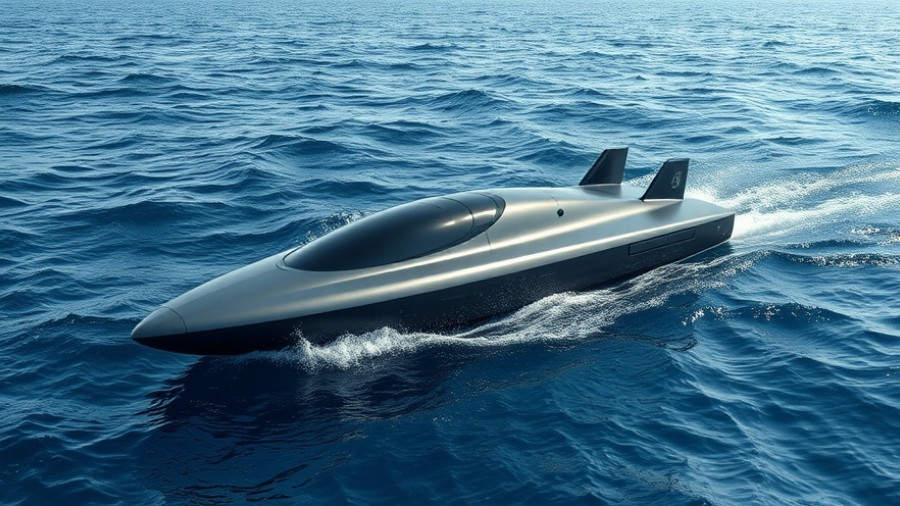
The Rise of Naval Drone Technology in Ukraine
Ukraine has recently showcased its advanced Sea Baby USV (Unmanned Surface Vehicle), featuring significant upgrades in both firepower and operational range. This initiative signifies a critical shift not only in Ukraine's naval defense strategy but also highlights the emerging importance of unmanned technology in contemporary warfare.
Advancing Naval Warfare: Key Features of the Sea Baby
The newly unveiled Sea Baby USV is equipped with powerful armaments, including a remote-controlled machine gun and a multi-rocket launcher. This evolution allows Ukraine to strike at distant targets, reinforcing its commitment to maintaining maritime safety and crippling Russian naval capabilities. The drone can operate effectively over distances exceeding 1,500 kilometers and carry payloads of up to 2,000 kilograms, a substantial upgrade compared to its predecessors.
Strategic Impact and Operational Successes
Recent operations have underlined the success of the Sea Baby drones in countering Russian naval movements. According to reports, these drones have been credited with numerous attacks on Russian ships, contributing to a paradigm shift in naval engagements within the Black Sea. Ukraine’s Security Service (SBU) claims that these unmanned platforms have played a significant role in disrupting enemy operations, including successful strikes on critical infrastructure like the Crimean Bridge.
The Changing Face of Warfare: Lessons for Other Nations
The developments surrounding Ukraine's Sea Baby drones provide valuable lessons for militaries worldwide. As nations observe the effectiveness of these unmanned vehicles, many are reevaluating their approach to naval defense and seeking to incorporate advanced drone technologies into their arsenals. This trend highlights a global shift towards using increasingly intelligent and versatile technologies in warfare.
Countermeasures and the Future of Navy Defense
Amid the advancements in naval drone technology, it is crucial to consider the implications of electronic warfare and counter-detection measures. Both Ukraine and Russia are reportedly developing electronic jamming systems that pose challenges to drone operations. Such dynamics necessitate a focus on building resilient defenses, including the implementation of buoy barriers and enhanced electronic warfare capabilities.
The Path Ahead for Ukraine's Naval Drone Program
The future of Ukraine's naval warfare strategy looks promising. With plans for expanding the deployment of its Sea Baby drones, including potential sales to allied nations, Ukraine aims to bolster international partnerships while asserting its capability in the maritime domain. This innovative approach not only enhances its defense posture but also lays the groundwork for increased cooperation with global naval forces.
Embracing the Future of Warfare
The unveiling of the Sea Baby USV underscores a transformative period in naval warfare. As Ukraine continues to innovate and adapt its strategies using unmanned systems, the international military community will be watching closely, eager to derive insights and strategies applicable to their own forces.
 Add Row
Add Row  Add
Add 




Write A Comment